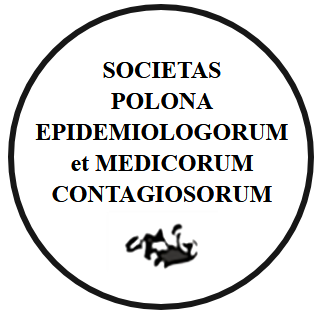RESEARCH PAPER
Gonorrhoea in Poland in 2021
1
Department of Epidemiology of Infectious Diseases and Surveillance, National Institute of Public Health NIH – National Research Institute, Polska
These authors had equal contribution to this work
Submission date: 2024-02-06
Acceptance date: 2024-02-12
Online publication date: 2024-04-10
Publication date: 2024-05-20
Corresponding author
Karolina Zakrzewska
Department of Epidemiology of Infectious Diseases and Surveillance, National Institute of Public Health NIH – National Research Institute, Warsaw, Polska
Department of Epidemiology of Infectious Diseases and Surveillance, National Institute of Public Health NIH – National Research Institute, Warsaw, Polska
Przegl Epidemiol 2023;77(4):466-475
KEYWORDS
TOPICS
ABSTRACT
Background: The incidence of gonorrhoea at the European level increased over 2012-2019, decreased in 2020, and then reached higher values in 2021 than in 2019. Objective: Analysis in the descriptive epidemiology scheme of gonorrhoea notification in surveillance in Poland in 2021 (being the second year of the COVID-19 pandemic). Material and methods: Case-base data from surveillance of gonorrhoea were used: confirmed case (meeting laboratory criteria), probable (meeting clinical criteria and contact with confirmed case) and possible (only in Poland - physician diagnosed gonorrhoea, no information available for proper classification). Statistic Poland data was used to calculate the indicators. Data on patients treated in dermatology-venereology clinics between 2019-2021 were taken from the Bulletins of the Ministry of Health. Results: The incidence of gonorrhoea in Poland in 2021 was only a fraction of recorded in the EU/EEA (0.74 vs. 13.7/100000)-similar to the first pandemic year and were about half of those notified in the 2019 (the peak year; 281 vs. 522 cases). There were 15.5 men per one female (incidence: 1.6/100000 men, 0.1/100000 women). Every second case was among aged 25-34 (49.62%), every fourth-aged 35-44 (23.11%). Under 15, no cases were reported. The predominant site was the genitourinary (excluding missing data: 85.3%). The cases with missing information on transmision increased (49.1%; aged 45+: 72.0%, women: 76.5%). Delays in reporting data were identified (greater than in 2019, however, less than in 2020), ~17% cases were from 2019-2020. Dermatology-venerology clinics treated 385 people - less than in 2020, however, more than reported in epidemiological surveillance (vs. 281). Conclusions: The COVID-19 pandemic has influenced on the surveillance system in Poland. There are difficulties in interpreting the epidemiological trend. It is necessary to: 1) intensify systemic solutions in the area of prevention, including sexual partners; 2) raise the awareness of healthcare professionals and sanitary inspection workers on the role of collecting epidemiological information.
Share
RELATED ARTICLE
We process personal data collected when visiting the website. The function of obtaining information about users and their behavior is carried out by voluntarily entered information in forms and saving cookies in end devices. Data, including cookies, are used to provide services, improve the user experience and to analyze the traffic in accordance with the Privacy policy. Data are also collected and processed by Google Analytics tool (more).
You can change cookies settings in your browser. Restricted use of cookies in the browser configuration may affect some functionalities of the website.
You can change cookies settings in your browser. Restricted use of cookies in the browser configuration may affect some functionalities of the website.





